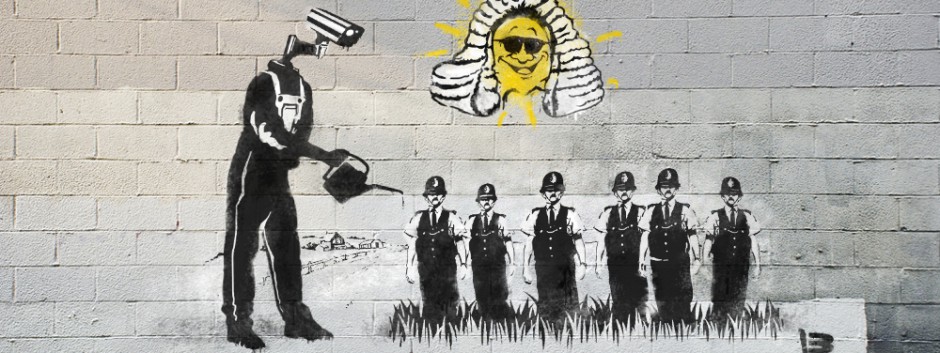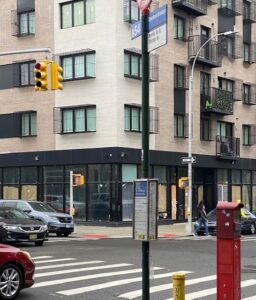This photo shows two discreet cameras on a building on the corner of Myrtle avenue in Brooklyn. As I was waiting for the bus, I barely noticed the cameras were there because it blended in with the building, both the cameras and the paint color black, looking closely I noticed there were many of them around the perimeter. This can be connected to “Sousveillance: Wearable and Digital Tools in Surveilled Environments,” by Jason Nolan et al, in the book it talked about the watched becoming the watcher, or in other words how in society we are under constant surveillance and in resistance we utilize our phones or recording devices to then become the ones to surveil our environment. According to the book it states, “The collection of data in public places, with the camera as the dominant form of data input device, is coupled with the integration of surveillance with statistical monitoring and security applications. The passive gathering of intelligence represents a challenge to privacy in public places that has been largely accepted.” This explains that intentionally the camera is set up for security and protection but at the same time we sacrifice our privacy and information. The careful placement of the cameras are important when trying to catch someone in a criminal act however, those who are not committing crimes and are living their everyday lives are subjects to observation from someone who they may never know or ever be in contact with. This idea of being watched has become the norm without most people questioning how they are affected by this type of surveillance.
This photo can also be connected to the article “‘The goal is to automate us’: welcome to the age of surveillance capitalism,” by John Naughton/Shoshana Zuboff. In the article, it talked about how Google and Facebook use algorithms as a form of surveillance to collect personal information and data to analyze for service improvements and behavioral study. This information can then be used and traded off as a way to manipulate society. This connects to my photo because this idea that someone/people are behind the camera always watching means that too can be used to study our behaviors, and that by simply stepping outside your front doors your privacy is being challenged. According to the article, it says “The combination of state surveillance and its capitalist counterpart means that digital technology is separating the citizens in all societies into two groups: the watchers (invisible, unknown and unaccountable) and the watched. This has profound consequences for democracy because asymmetry of knowledge translate into asymmetries of power.” It explains that with the acceptance of ubiquitous surveillance we relinquish our own power because we do not know who is watching, but that who is watching knows us. Therefore, through that knowledge they will remain powerful above those being watched.





Good stuff. Nice connections.